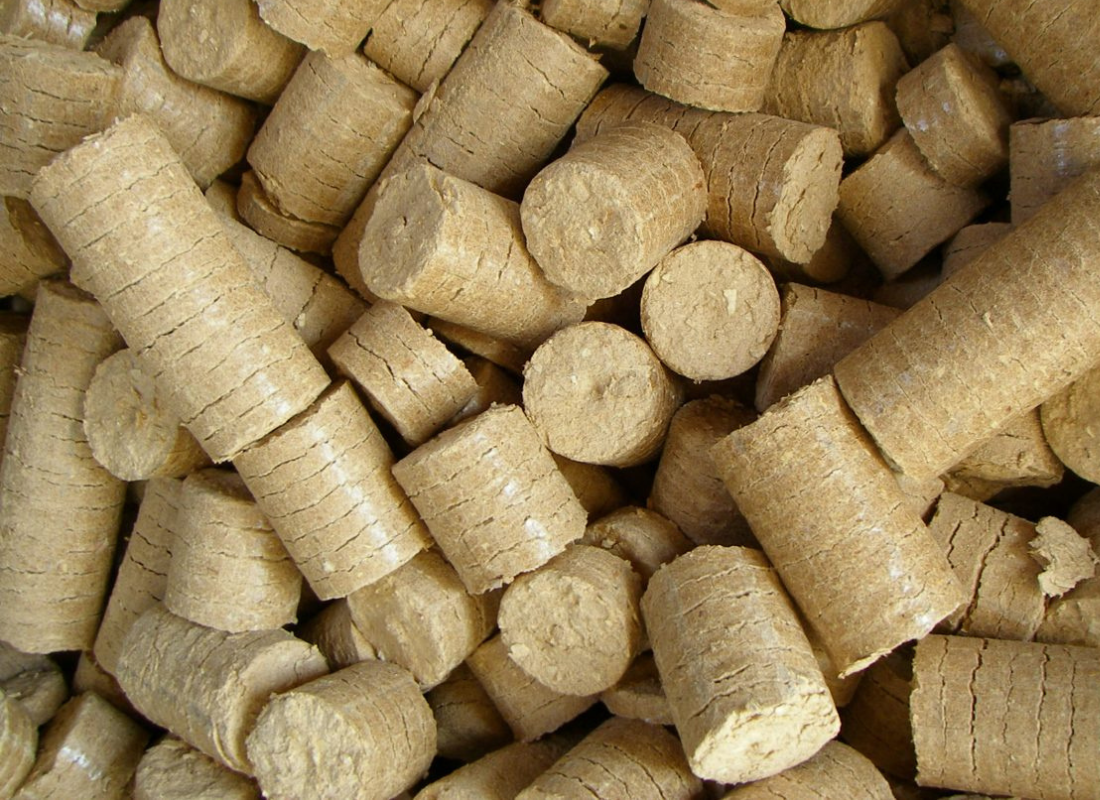There are various Briquettes that are available in the market. They are a suitable alternative to logs and fossil fuels that won’t run out. Wood, peat, charcoal, straw, and hay briquettes can all be used to heat your home in different ways. Briquettes are a good way to get energy that is also good for the earth. This article talks about how different briquettes, like those made of wood, peat, charcoal, straw, and hay, work.
What Are Biomass Briquettes?
Biomass Briquettes are a biofuel substitute for coal and charcoal. Some of these Briquettes are mostly used in the developing world, where cooking fuels are not as easily available. There has been a move to use briquettes in the developed world, where they are used to heat industrial boilers to produce electricity from steam. The briquettes are co-fired with coal to create the heat supplied to the boiler.
Briquetting is the process to improve the characteristics of biomass as a renewable energy resource by densification. Densification means less volume needed for the same amount of energy output.
The advantages of processing and densifying biomass are not only limited to the higher energy content. Briquetting is based on compacting the raw material to yield certain advantages.
Some are as follows:
- High volumetric energy density
- Favorable dosing characteristics
- Lower water content in the fuel and therefore greater storage stability (less biodegradation)
- Option to use additives to change the chemical/material properties
- Less dust is produced when handling
- The high homogeneity of the fuel
FA binding agent is necessary to prevent the compressed material from springing back and eventually returning to its original form. This agent can either be added to the process or, when compressing ligneous material, be part of the material itself in the form of lignin. Lignin is a constituent in most agricultural residues. It can be defined as the thermal plastic polymer, which begins to soften at temperatures above 100°C and flows at higher temperatures.
The softening of lignin and its subsequent cooling while the material is still under pressure is the key factor in high-pressure briquetting. It is a physic-chemical process related largely to the temperature reached in the briquetting process and the amount of lignin in the original material. The temperature in many machines is closely related to the pressure though in some, external heat is applied.
In general, there are two immediate ways of classifying briquetting processes. One distinction is whether or not an external binding agent must be added to agglomerate the compressed material. The second way of classifying follows the pressure applied while briquetting: high, medium, or low pressure. For a rough distinction, the following numbers might be adopted.
Including:
- Low pressure up to 5 MPa
- Medium pressure 5 – 100 MPa
- High pressure above 100 MPa
Usually high pressure processes will release sufficient lignin to agglomerate the briquette. Medium pressure machines may or may not require binders, depending upon the raw material whilst low-pressure machines invariably require binders. Such external binders might be: starch, clay, molasses or wood tar etc .. All briquettes using inherent binders (lignin) or external hydrophilic binders (starch, molasses, gum, clay) are not waterproof and will disintegrate when they come into contact with water or stored under humid conditions.
1. Wood Briquettes
Wooden Briquettes are dense blocks or logs made from compressed wood or biomass. They serve as a popular fuel source for heating. Manufacturers press wood chips, sawdust, or other wood residues to make wood briquettes. In many ways, wood briquettes are better than regular fuel. They give off more heat per unit of weight, which means they have a higher energy density.
Usually, wooden briquettes are small and regular and shape, which makes them easy to store, move, and handle. We can use them with fires, stoves, and heaters.Wood briquettes are eco-friendly and can be made repeatedly because they are made from waste wood. By making briquettes out of these products, we lose less and use fewer fossil fuels. Compared to other fuels, wood briquettes also produce less carbon gas than other fuels.
2. Peat Briquettes
In this case, Peat Briquettes are solid fuel products made by pressing peat moss. The decomposition of plants produces peat moss in water-saturated and acidic environments known as peat lands or bogs. To produce peat briquettes, peat is extracted from bogs, dried to decrease its moisture content, and then compressed with high pressure to create dense briquettes. Sometimes binders or additives are used to improve their structure and combustion properties.
Peat briquettes with high energy and slow, efficient burn are a popular choice for warmth, particularly in peat-rich areas, as they ensure even heat distribution. This makes sure that the heat is spread out evenly. But it’s important to think about what using wood as fuel does to the earth. Peat lands are important ecosystems because they store carbon and are home to plants and animals that aren’t found anywhere else. Taking peat for fuel can destroy ecosystems and lower the number of species.
Charcoal Briquettes
As for the Charcoal Briquettes, they are dense blocks or logs of carbon-rich charcoal made by heating wood or organic material in the absence of oxygen. Because of its high energy content and even heat release, they often use it as a fuel for cooking and grilling. They made charcoal briquettes by combining charcoal with other substances and pressing them into shape. In the pyrolysis procedure, which is part of the production process, wood or other material is heated to high temperatures to remove moisture, volatile chemicals, and impurities, leaving carbon-rich charcoal.
They crush the charcoal, mix it with binders and other ingredients if needed, and then press it into briquettes. Charcoal Briquettes are better than lump charcoal because they are all the same size and shape. This makes them easier to handle, stack, and light. They burn for longer, keep the heat going, and make less smoke and ash when they burn. It’s important to keep in mind that commercial charcoal briquettes might have chemicals that change how they burn and how food tastes.
Straw & Hay Briquettes
Last but not least, Straw & Hay Briquettes are solid fuels that are made by pressing waste from farms. These briquettes are dried grain plants and grasses or legumes. A briquette machine collects, processes, and presses straw and hay under high pressure. This process includes breaking, drying, and sometimes adding binders or other substances to make the briquettes burn better and have a better shape.
These briquettes are an environmentally friendly way to get rid of farm trash. By making briquettes out of straw and hay, they help reduce trash and protect the earth. I can use them to heat my home with biomass burners, fires, or special ovens. I could also use them to cook with. Straw & Hay Briquettes have many benefits, such as being easy to find, cheap, and carbon neutral. They are natural resources with a moderate amount of water and a high energy density. This makes them burn and gives off heat efficiently.

